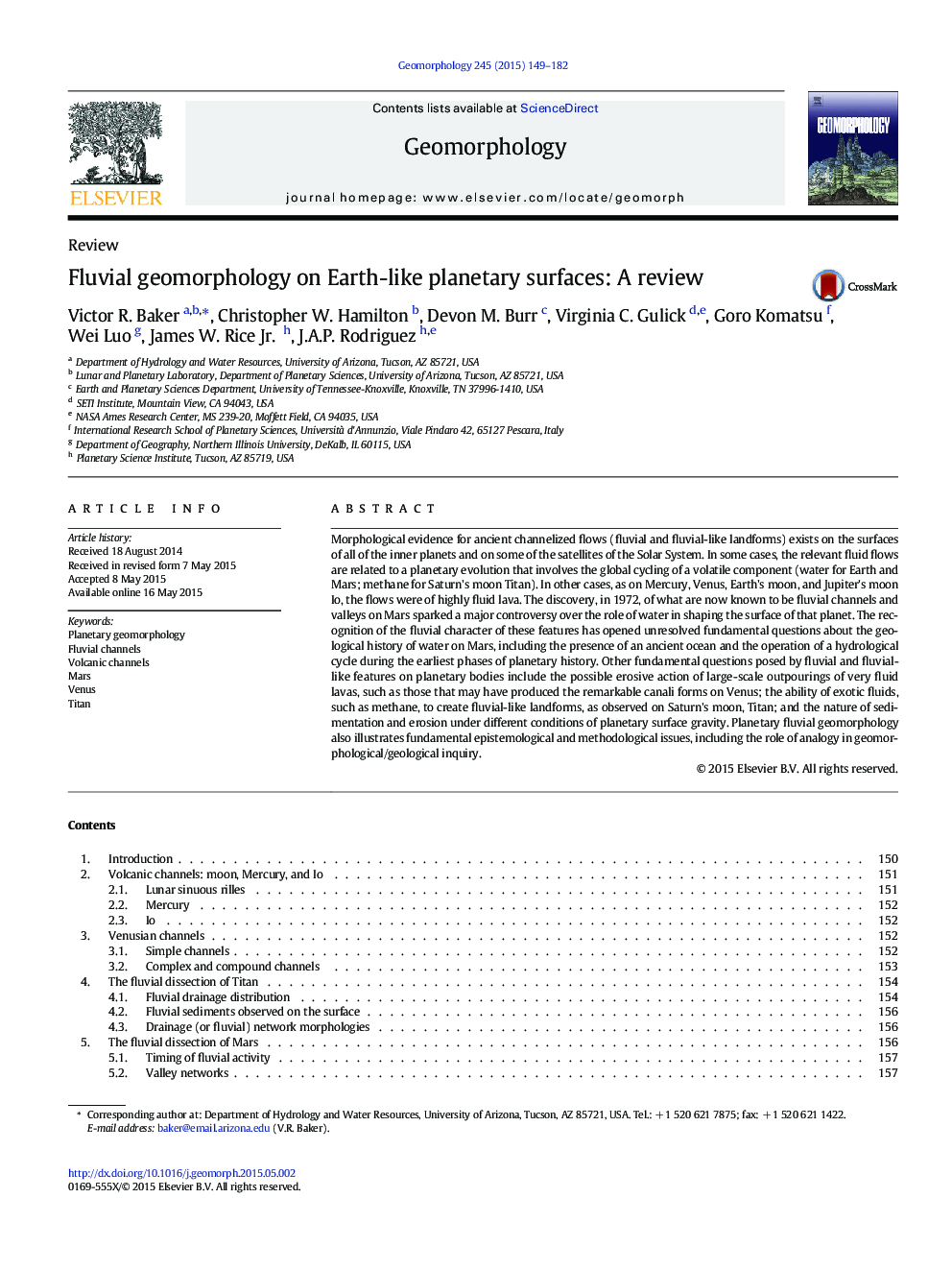| Article ID | Journal | Published Year | Pages | File Type |
|---|---|---|---|---|
| 4684165 | Geomorphology | 2015 | 34 Pages |
•Mercury, Venus, Earth's moon, and Jupiter's moon Io all have channels formed by lava.•Saturn's moon Titan has a dissection history involving methane.•Mars has had an extensive fluvial history involving dissection by water.•Lava channels and fluvial channels exist in geological contexts that allow for their distinction.
Morphological evidence for ancient channelized flows (fluvial and fluvial-like landforms) exists on the surfaces of all of the inner planets and on some of the satellites of the Solar System. In some cases, the relevant fluid flows are related to a planetary evolution that involves the global cycling of a volatile component (water for Earth and Mars; methane for Saturn's moon Titan). In other cases, as on Mercury, Venus, Earth's moon, and Jupiter's moon Io, the flows were of highly fluid lava. The discovery, in 1972, of what are now known to be fluvial channels and valleys on Mars sparked a major controversy over the role of water in shaping the surface of that planet. The recognition of the fluvial character of these features has opened unresolved fundamental questions about the geological history of water on Mars, including the presence of an ancient ocean and the operation of a hydrological cycle during the earliest phases of planetary history. Other fundamental questions posed by fluvial and fluvial-like features on planetary bodies include the possible erosive action of large-scale outpourings of very fluid lavas, such as those that may have produced the remarkable canali forms on Venus; the ability of exotic fluids, such as methane, to create fluvial-like landforms, as observed on Saturn's moon, Titan; and the nature of sedimentation and erosion under different conditions of planetary surface gravity. Planetary fluvial geomorphology also illustrates fundamental epistemological and methodological issues, including the role of analogy in geomorphological/geological inquiry.
